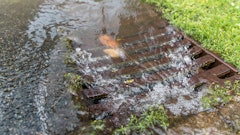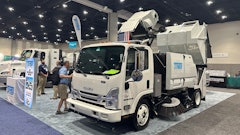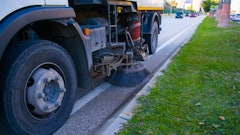Gerry Kesselring and Gabe Vitale will be the first to tell you that those three percentages won't mean the same for every contractor, but they'll also be the first to tell you how important finding those numbers has been to each of their sweeping companies.
That's because those three figures represent job costing benchmarks that have helped Kesselring's company, Contract Sweepers & Equipment, and Vitale's company, C&L Sweeper Service, improve their bidding, efficiency, and bottom line over the last few years.
By now most contractors have run across the term "job costing," whether they implement it formally in their business or not. And in actuality most contractors perform at least the most basic type of job costing at the end of the year when they total up their expenses and sales and try to figure out if they made any money. But much more than a year-end wrap-up, job costing can be the most effective management tool a contractor can apply to his business. And it's a tool that, when used regularly, can help a business adapt to changing economic conditions almost as they occur - instead of lagging a year behind.
"If you don't have good measurements I don't know how you're successful," Kesselring says.
Their efforts at comparing and contrasting job costing information has its roots in the North American Power Sweeping Association (NAPSA), where both are long-time members, and in a NAPSA benchmarking survey the association conducted several years ago. The work they've done together has helped both companies establish benchmarks for each company to aim for. "To a point we were able to come up with benchmark figures, yes," Vitale says.
He and Kesselring say that their efforts have enabled them to determine that fuel costs should be roughly 9.3% of revenues, that direct labor (wages only) should be 25% of revenues for parking lot sweeping, and that direct labor for broom sweeping should be roughly 25.5%. Neither of the labor figures includes benefits, insurance etc. (They caution that these job costing figures are benchmarks for the two operations and might or might not be applicable to other contract sweeping operations.)
On the other hand they have not been able to come up with benchmarks for other aspects of the business, such as equipment repairs, because the two companies operate differently in that area. Contract Sweepers buys a lot of new equipment, depreciating it over the life of the machine, so its repair costs are significantly lower than those of C&L Sweeper, which buys much less new equipment, relying instead on two mechanics to keep the sweepers operating efficiently. "I repair a lot and he doesn't," Vitale says. "It's as simple as that and because of those differences we can't make too many judgments in that area."
Kesselring says the biggest impact job costing has made for Contract Sweepers is in helping the company understand its labor costs for each type of sweeping service it offers, which has helped improve its bidding.
"The biggest mistake I see contractors making when bidding jobs is they don't take into account depreciation and overhead on that job," Kesselring says. "If you have a manager that makes $52,000 a year that means you have $1000 a week that needs to be allocated somewhere. If your company works 500 hours a week [collectively] you need to charge out that manager to each hour - and that's the piece that I don't think our industry looks at very well."
Vitale says his job costing helps keep C&L Sweeper Service on track throughout the year.
"Job costing shows us right away if our actuals are out of line - high or low - compared to our projections," Vitale says. "Then we can ask the question we need to ask: Why is that? It helps you manage because if you're not hitting your numbers as the year goes along you can take a look and see what changes you need to make. Then, when you make a change you're making intelligent decisions based on hard information, you're not just shooting from the hip. Knowing our numbers has made a big, big difference to us."
To see how these two contractors worked together to improve their job costing, and to learn how better job costing improved their respective bottom lines, read "Raising Red Flags" in the October/November issue of Pavement Maintenance & Reconstruction.

























